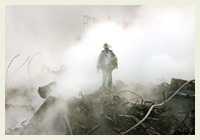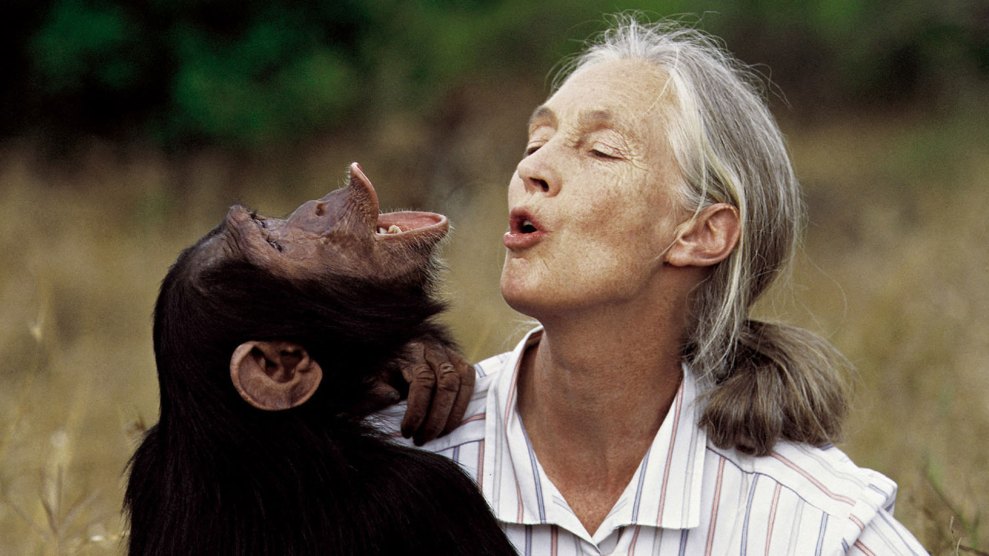
Image: AP/Wide World Photos
The death toll from the World Trade Center disaster now hovers around 3,000, about half the early estimates. But there is evidence that the final tally may rise over time, as the long-term effects of working at Ground Zero take their toll among rescuers and volunteers.
Those at greatest risk are the thousands of firefighters, police, emergency personnel and volunteers who streamed to the devastation in the hours, days and weeks after the twin towers collapsed. Working round-the-clock, with little or no respiratory protection, these men and women inhaled a soup of dust, gases, burning chemicals and potentially toxic compounds.
“This was an emotional scene, where people were intent on finding people they could save,” said Dr. Stephen M. Levin, medical director at Mt. Sinai’s Selikoff Center for Occupational and Environmental Medicine. “People, even those who knew better, weren’t paying much attention to their own well-being.” Considering their selfless actions, the men and women who toiled at Ground Zero at least deserve to know that health officials will be watching to learn if their heroism will carry a heavier price, Levin said. “Out of the millions of dollars devoted to the recovery efforts in New York City, there should be money put aside to find, register and clinically assess every one of those people – the volunteers and the employed workers,” said Levin. “Most of those people did something extraordinary. They risked themselves not for their own interests but out of a desire to serve the public good.”
Almost immediately after the Sept. 11 attack, Levin began seeing patients with respiratory problems. For some, the symptoms subsided quickly; for others, the damage may be permanent. Far more difficult to quantify, according to Levin and others, will be the long-term health problems attributable to the inhalation of multiple hazardous substances, including several known or suspected cancer-causing agents such as benzene, PCBs, dioxin and chromium, emitted from the rubble.
There is a growing recognition among toxicologists that these chemical compounds are created by combustion and in certain work environments can be extremely hazardous. Some firefighters who have responded to hazardous waste fires, for example, have developed related health problems a decade or more after the exposure. Workers in industries where multiple chemicals are used, such as in fabrication of computer chips, also have recorded higher-than-expected incidents of health problems.
While Levin believes relatively few of those who responded to the Sept. 11 disaster will suffer from related long-term ailments, others aren’t as certain.
“Right now, we’re in uncharted waters,” said Monona Rossol, an industrial hygienist who works in Lower Manhattan. “No one has a clue what this is going to do.”
Federal, state and city officials have repeatedly downplayed risks to those outside the immediate World Trade Center site. New Yorkers have been encouraged to return to their jobs and apartments, clean up and resume a normal life.
“The vast majority of our tests find levels of these contaminants…pose no significant long-term health risks to residents, business employees and visitors beyond Ground Zero,” Kathleen Callahan, a top EPA official told a New York City Council committee in November.
Still, Callahan’s reassurances offer little solace to the rescue workers and volunteers who toiled at the disaster site. By the EPA’s own admission, the agency has no capacity to measure hazards from chemical compounds formed by the fires, or calculate the cumulative effects of these chemicals.
“We really have not developed methodologies to do that kind of assessment,” an EPA spokeswoman said when the data were released. Yet these complex chemical mixtures may be the most dangerous byproducts of the fire, particularly for those working at the site.
“They keep saying that almost all of these contaminants are below levels of concern, but if there are 20, 30, 40 of them,” said Rossol. “Here we have 210 floors of carpets, wallboard, furniture, computers, all burning. No one has a clue what this is going to do.”
No one knows how combinations of toxic chemicals affect the human body, says Levin. They may have a cumulative effect, with two compounds combining to form a single new compound, or a synergistic effect, with two compounds combining to form many new compounds. “Nobody’s done that research,” he said.
Levin says a medical monitoring program to track all those who worked at the World Trace Center site would cost about $10 to $12 million. Of greatest concern are the countless private citizens who poured into Lower Manhattan to help with the rescue during the first several weeks. Many didn’t bother to sign a register; many used only handkerchiefs to block out dust. Later, more volunteers and day laborers came in contact with high levels of asbestos and dust as they entered apartments and businesses to help with the cleanup. As with the early volunteers, there are few records to show who might have been exposed to the dangerous agents.
“The volunteers are the great unknown here,” says New York State Assemblyman Richard Brodsky, chairman of the Environmental Conservation Committee, which in late November held hearings on hazards at the World Trade Center site. “No one knows who they are, and they’ve been thrown back on their own health care plans.” If they have them.
Brodsky supports creation of a monitoring program for everyone who worked at the disaster — about 10,000 people. Still, no formal effort has yet been launched.
“We’re not going to know the true extent of the social, emotional and physical injuries of this thing for at least 10 years,” says Brodsky. “There’s a certain degree of denial now…because of the need to keep people affirmative. That’s the American character. But medical follow-up of these people is crucial.”
















